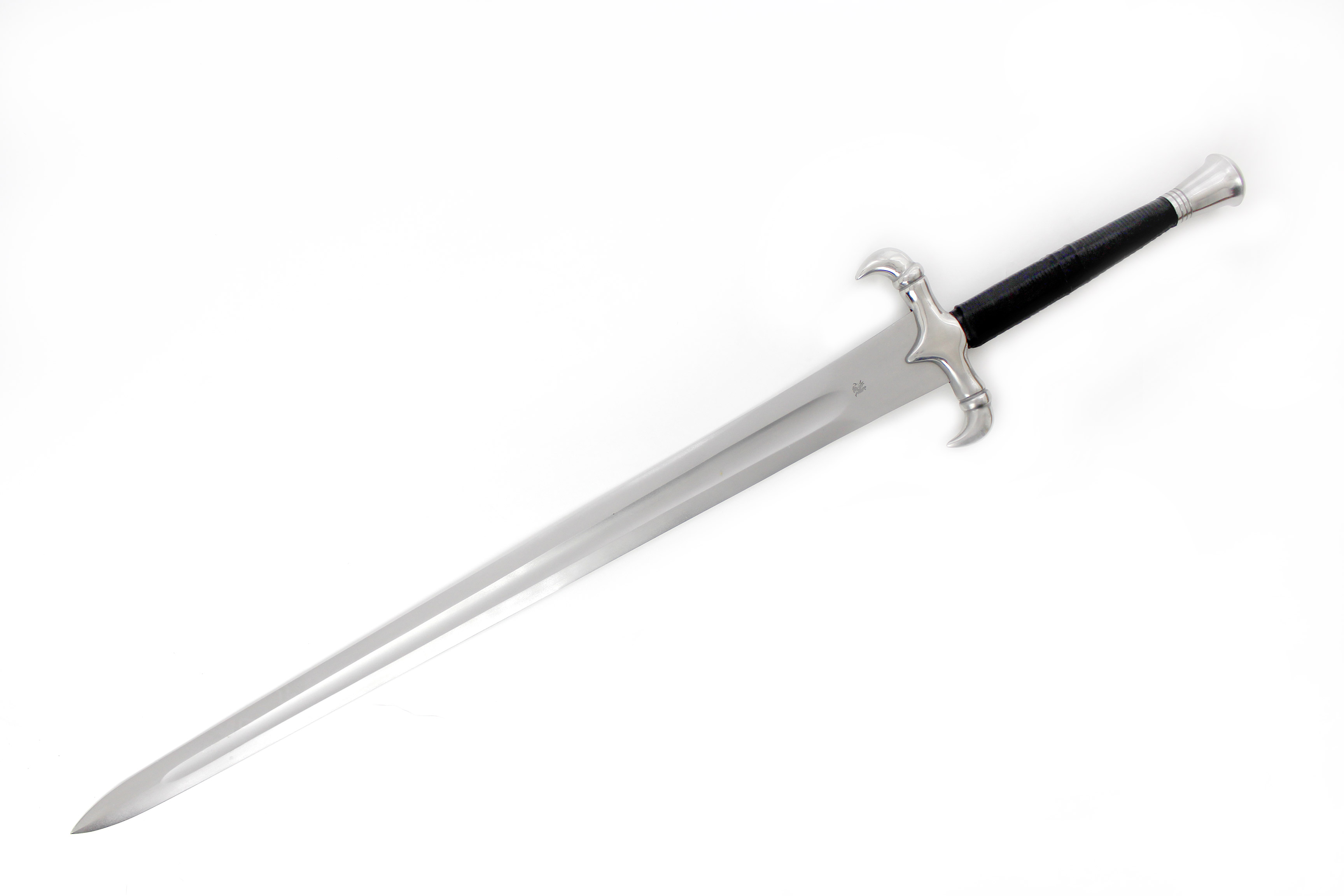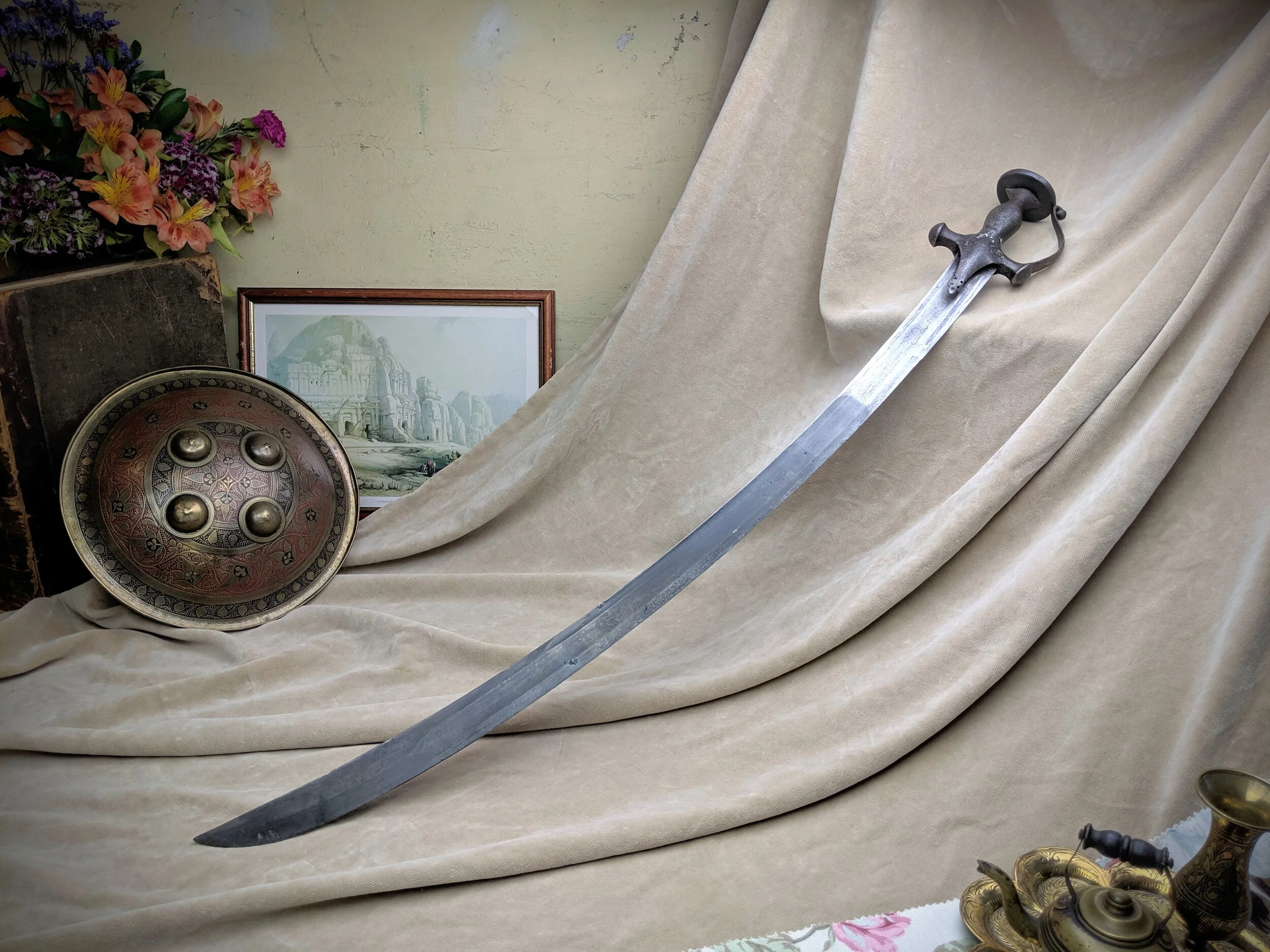Historical Evolution of the Sword

The sword, a timeless and formidable weapon, has played a pivotal role in shaping human history. Its origins can be traced back to the Stone Age, where sharpened stones were used for both hunting and self-defense. As civilizations advanced, so too did the evolution of the sword.
The Bronze Age witnessed the emergence of metal swords, crafted from copper and later bronze. These swords were more durable and effective than their stone predecessors, enabling warriors to inflict greater damage on their foes. With the advent of iron, swords became even stronger and more widespread.
Throughout history, different cultures have developed their own unique styles of swords. In ancient Egypt, the khopesh, a curved blade with a distinctive hook, was favored by pharaohs and their armies. The Greeks and Romans employed the gladius, a short, double-edged sword designed for close combat. In Japan, the katana, a long, curved blade, became synonymous with the samurai warrior class.
Famous swords have often become symbols of power and prestige. Excalibur, the legendary sword of King Arthur, is said to have been bestowed upon him by the Lady of the Lake. The Sword of Damocles, hanging precariously over a king’s head, represents the constant threat of danger. And the Masamune, a renowned Japanese sword, is revered for its exceptional craftsmanship and cutting ability.
The sword has evolved from a simple tool to a sophisticated weapon, reflecting the technological advancements and cultural influences of different eras. It remains an enduring symbol of strength, courage, and the human capacity for both creation and destruction.
Anatomy and Design of a Sword

Sword definition – The anatomy of a sword comprises three fundamental components: the blade, the hilt, and the scabbard. Each element plays a crucial role in the sword’s functionality, aesthetics, and historical significance.
The Blade
The blade, the sword’s heart, is typically composed of a single piece of forged metal. Its shape and dimensions vary greatly, influencing the sword’s cutting, thrusting, and defensive capabilities. Blades can be:
- Single-Edged: Designed for cutting or slashing, with one sharpened edge and a blunt back.
- Double-Edged: Capable of both cutting and thrusting, with two sharpened edges.
- Curved: Often used for slashing or chopping, with a blade that curves outward from the hilt.
- Straight: Typically used for thrusting or fencing, with a blade that runs parallel to the hilt.
The Hilt
The hilt provides the grip and control for the wielder. It consists of the following elements:
- Handle: The part of the hilt gripped by the hand, often wrapped in leather or cord for comfort.
- Guard: A crosspiece or series of bars that protects the wielder’s hand from the opponent’s blade.
- Pommel: A weighted end-piece that balances the sword and provides a counterweight for thrusting.
The Scabbard
The scabbard is a sheath that protects the blade when not in use. It can be made of wood, leather, or metal, and often features intricate designs or engravings.
Materials, Sword definition
The materials used in sword construction significantly impact its performance and durability:
- Steel: The most common material for sword blades, providing a balance of strength, flexibility, and edge retention.
- Iron: A more affordable option than steel, but less durable and prone to rust.
- Bronze: An early sword material, known for its strength and resistance to corrosion.
- Titanium: A modern material used in high-end swords, offering exceptional strength and lightness.
Swordsmanship and Techniques: Sword Definition
Swordsmanship encompasses the art and science of wielding a sword effectively. Its principles, techniques, and strategies have evolved over centuries, reflecting diverse cultural influences and martial traditions.
Basic Principles
The foundation of swordsmanship lies in the mastery of fundamental principles, including stance, grip, and footwork. A balanced and stable stance provides a solid base for executing techniques, while a secure grip ensures control over the weapon. Agile footwork allows for swift movement, evading attacks, and positioning for optimal strikes.
Sword Fighting Techniques
Sword fighting techniques vary widely depending on the type of sword, its intended purpose, and the cultural context. Some common techniques include:
– Thrusting: A direct attack that aims to pierce the opponent’s body.
– Cutting: A slashing motion that severs or wounds the opponent.
– Blocking: A defensive maneuver that deflects or parries an incoming attack.
– Dodging: Evading an attack by moving out of its path.
Historical Swordsmanship Manuals
Throughout history, numerous swordsmanship manuals have been written, documenting the techniques and principles of various martial traditions. These manuals have significantly influenced modern practices, providing insights into historical combat methods. Notable examples include:
– Flos Duellatorum (1410): An Italian treatise that covers a wide range of swordsmanship techniques, including longsword, rapier, and dagger.
– The Book of the Sword (1639): A Spanish manual by Geronimo de Carranza, focusing on rapier and dagger fencing.
– Myamoto Musashi’s Book of Five Rings (1645): A Japanese treatise by the renowned samurai Miyamoto Musashi, exploring the philosophy and strategy of swordsmanship.
The sword, a weapon of war, has been used throughout history to protect and conquer. Its sharp blade, forged from metal, is a symbol of power and strength. Yet, even the mightiest sword can be shattered by a diamond , a precious stone known for its hardness and brilliance.
Diamonds, formed under intense pressure and heat deep within the earth, are a testament to the transformative power of nature, just as the sword is a testament to the destructive power of man.
A sword, a weapon of warriors and nobles, gleams with a sharpness that can cleave flesh and bone. Its blade, honed to perfection, is a testament to the skill of its maker. But even the sharpest sword can be dulled by the passage of time, its edge blunted by countless battles.
In the same way, the brilliance of a diamond, a symbol of love and purity, can be obscured by the grime of the world. Yet, with a little care and attention, both sword and diamond can regain their former glory.
Like the diamond meaning is everlasting and unbreakable, the sword’s edge can be honed once more, ready to face any challenge.
A sword, a weapon of war and glory, its sharp edge slicing through the air like a whisper of death. But in the realm of chance, where fortune’s wheel spins, another blade dances—the slot machine. Its reels adorned with symbols of wealth and fortune, it tempts with the promise of a quick strike of luck.
Yet, like the sword, the slot machine’s allure can be both alluring and perilous, a dance with fate that can end in either triumph or despair.
A sword, a weapon of sharpened steel, has been wielded by warriors throughout history. Its keen edge has cleaved flesh and bone, its weight a force to be reckoned with. But even the mightiest sword can find its match in the depths of the tomorrow pit , where the darkness swallows all, and the very definition of a sword becomes blurred and uncertain.
The sword, a weapon of war and a symbol of power, has been used throughout history to shape the course of nations. But what happens when a sword is no longer needed for battle? In the hands of a skilled artisan, it can be transformed into something new, something beautiful, like an umbrella pit.
This intricate work of art, once a deadly weapon, now serves a more peaceful purpose, protecting people from the elements rather than harming them.